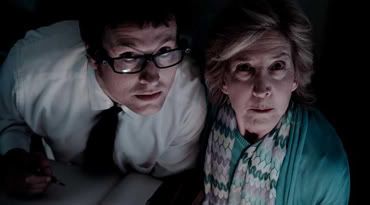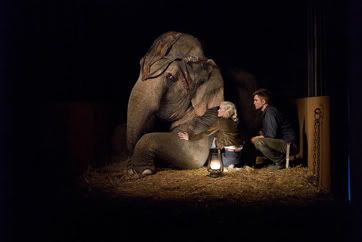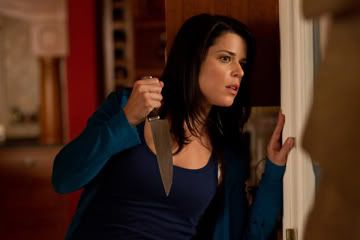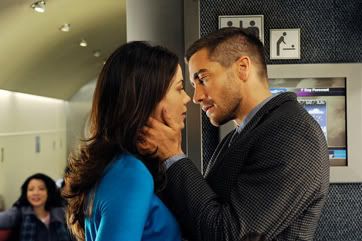

"Insidious" (2011)
The new horror film from "Saw" director James Wan, "Insidious," was produced by Oren Peli, the guy behind the "Paranormal Activity" phenomenon. It makes sense as this film has many similarities with the two "Paranormal Activity" installments which I admire equally; that is, things going bump in the night when they shouldn't be. Peli's horror sensation worked because it re-captured teen audiences' attention with slowly built-up tension and real scares when they were previously getting pummeled with the likes of "Saw" and "Hostel." Wan and his screenwriter Leigh Wannell's new horror entry "Insidious" does one better. It refines the tastes presented by "Paranormal Activity" escalating the contraption of a haunted house to even more skilled technique and trickery. It's as if James Wan wanted to fix what he started with "Saw" and the torture porn craze.
Renai (Rose Byrne) and Josh (Patrick Wilson) moved into a new home wanting to start a new life with their three kids. With piles of unpacked boxes and the family still trying to get everything together, things--of course--don't get any better. Enter the paranormal house guests. It starts with strange sounds, uncomfortable feelings of someone watching and a threatening voice from the baby monitor. Then their son Dalton (Ty Simpkins) has an accident that puts him into a months-long coma. But it's no secret that whatever happened to Dalton was no real "accident."
Cracking under the pressure of dark visions and paranoia, Renai demands that she and her husband move the family to a new home. No such luck. Turns out that whatever's haunting them isn't just confined to their previous home, but rather, travels with them in their son Dalton. They decide to bring in a paranormal expert named Elise, played by a captivating and scene-stealing Lin Shaye, with her two hipster comic relief sidekicks.
What really gets "Insidious" under your skin is the expertly created atmosphere thanks to clever and unique camera work, lighting and set design. Not to mention the great music composed of shrieking, dissonant strings. In an exercise of unrivaled suspense, Elise performs a type of séance wearing an elaborate gas mask to communicate with the spirits haunting Dalton. They sit around a table lit low with a green lamp and bright flash bulbs popping behind them as the camera swiveling around the table. More impressive are the unsettlingly horrific images the movie brings to viewers that stay burned in the back of your mind; these images are reminiscent of "The Shining" and "The Ring" as the plot itself borrows greatly from "The Poltergeist" and "The Exorcist."
When the film enters the realm of "The Further"--which was its original title--things get delirious ramping up the spooky haunted house into a wild amusement park ride. But it never loses its subtle nuances of keeping those creepy demons and malevolent afterlife spirits the primary focus of fright.












